
Cotton in Bolton
Visit to Bolton 2nd July 2013.
Hall i' th' Wood
The Hall i' th' Wood is a Tudor 16th Century house overlooking Bolton on the northern edge of the town where Samuel Crompton worked on his spinning mule. Lord Leverhulme, the soap magnate whose name lives on in Unilever, renovated the house and gave it to Bolton Corporation in 1902.
In his book (Reference 1), The Spinning Mule (available at Helmshore Textile Museum), Harold Catling writes:
'The mule, a machine combining the spinning action of the jenny with the drafting action of the water-frame, was invented by Samuel Crompton in the late 18th Century. As a textile machine it was immediately and completely successful, so successful indeed that for the next hundred years it was subjected to intensive engineering development directed towards making it a completely automatic machine.'
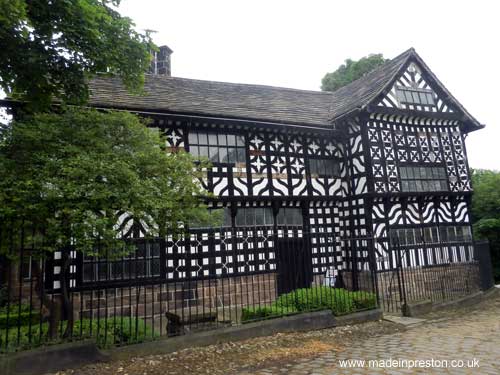
The room in which Samuel Crompton worked:
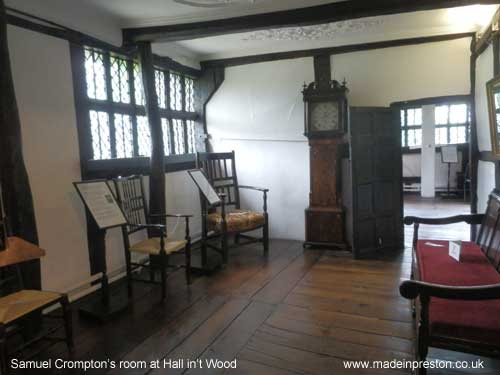
Samuel Crompton's Spinning Mule on a cloth, the original mule is in Bolton Museum.:

Bolton Town Hall
A very fine classical building visible from most of the town.
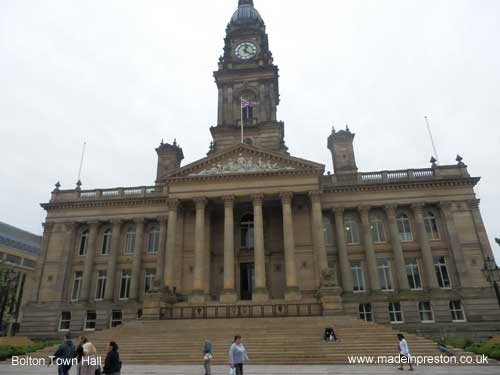
Bolton, Le Mans Crescent, a very attractive building, unexpected in a northern town, built in the 1930's. Behind the Town Hall.
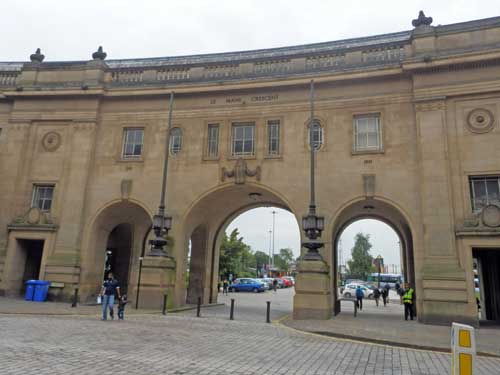
Bolton Museum and Art Gallery
At one end of Le Mans Crescent.
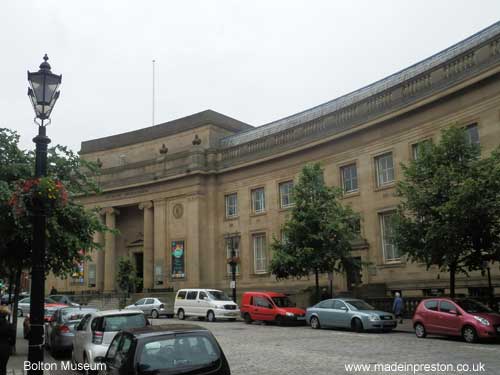
Bolton's museum is well known for its Egyptian display. It explains that this was started by the cotton mill owners who visited Egypt to purchase cotton. In 2013 much of the display is on a world tour.
Bolton along with Oldham dominated the spinning industry in Lancashire with some 17 million spindles in the two towns out of 50 million in 1905. Bolton concentrated on fine yarn and Oldham on coarse. (ref 1).
The reason for our visit was to view the cotton legacy. This is in a room related to cotton and in a room related to Bolton. The original Crompton Spinning Mule is in one room.
Cotton stages of process:
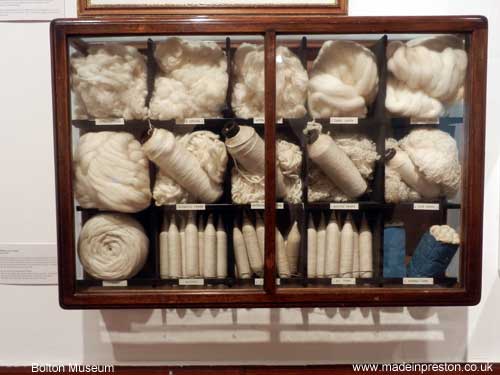
Horrockses, Miller and Co of Preston.
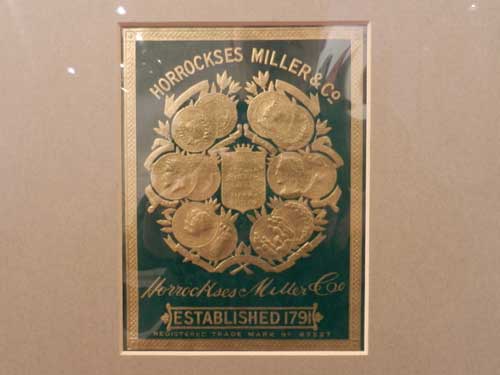
Fred Dibnah Statue
Bolton's famous TV personality and character, engineer, chimney demolisher and steeplejack.

To be added the Bolton Steam Museum, of mill engines. See their website.